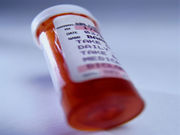Longer wait time for vital acute-care meds despite legislation
FRIDAY, May 6, 2016 (HealthDay News) — Drug shortages remain a problem in the United States despite government legislation meant to increase availability, according to a study published in the May issue of Health Affairs.
More than half of recent shortages involved acute-care drugs used to treat seriously ill patients in hospitals and emergency departments, according to researchers at Yale University in New Haven, Conn. “Our key finding was that up to 2012, shortages were rising for both non-acute and acute drugs,” senior author Arjun Venkatesh, M.D., an assistant professor of emergency medicine, said in a Yale news release.
Since 2012, when the U.S. Food and Drug Administration was authorized to deal with the crisis, “the shortages for non-acute drugs are decreasing and getting shorter but the shortages for acute drugs are increasing and getting longer,” Venkatesh said. According to the researchers, drugs in short supply tripled over the past decade. For the study, the Yale researchers analyzed data from 2001 to 2014. They found the overall number of drug shortages declined after the FDA gained its new powers, which could wrongly suggest drug availability is no longer a problem, the study authors said.
“You could look at the passage of the law and the overall decline, and view it as a success,” Venkatesh said. “That’s not the case. These acute-care drugs have been ignored.” Also, shortages of acute-care drugs lasted about eight months on average, compared to about seven months for all drugs overall. Resorting to alternative drugs can raise the likelihood of medical error and push up costs and side effects, compared to the preferred drugs, the researchers noted.
Copyright © 2016 HealthDay. All rights reserved.








